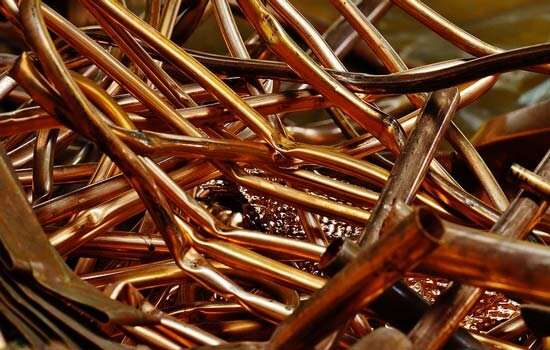Rare earth unlocks copper, gold and silver secrets

A study by Monash scientists has found that a rare earth affects the fate of a key reaction with copper, gold, silver, and uranium mineralisation.
The work is part of the "Olympic Dam in a test tube" project, where researchers tried to reproduce the processes that resulted in the concentration of more than a trillion dollars worth of metals at Olympic Dam in South Australia in the laboratory.
The study, published in Nature Communications, found that Cerium, which belongs to the group of elements called 'rare earths' speeds up important reactions and plays other significant roles.
"Previous thinking was that Cerium just came along for the ride, that is, the ore fluids picked up some cerium on their way to Olympic Dam," said study author Professor Joël Brugger, from the Monash School of Earth, Atmosphere and Environment.
"But our results place Cerium in the driver's seat, as the presence of Cerium affects the fate of one of the key reactions associated with copper, gold, silver, and uranium mineralisation at Olympic Dam," he said.
"The study establishes the fact that trace elements can have an important, yet difficult to predict, effect on the coupling between fluid flow, creation of porosity, and mineral dissolution and precipitation, that controls large-scale element mobility and rheology in the Earth's crust."
Giant ore deposits are natural wonders, where enormous amounts of metals are accumulate.
They represent an important part of Australia's wealth and are key for resourcing a carbon-free economy, which requires large amounts of traditional metals such as copper, as well as high-tech metals such as rare earth elements (until now used only in some niche applications).
"In order to discover new giant deposits and efficiently mine existing ones, we need a mechanistic understanding of the processes that form—and transform—the minerals that host valuable metals," Professor Brugger said.
The research team discovered that Cerium plays an active role during the replacement of magnetite by hematite: it acts as a catalyst that speeds up the reaction; provides space for the precipitation of the value minerals; and promotes a positive feedback between reaction and fluid-flow, that contributes to increasing the metal endowment of the deposit.
The study potentially has wide implications for the materials sector and industry.
"Although more recycling is an important part of raw materials' future, we need more metals than the sum of those mined to date to resource the transition to a carbon-free economy," Professor Brugger said.
"Giant deposits are attractive because they can produce for decades, providing long-term security of supply and justifying large investment to ensure sustainable mining."
More information: Yanlu Xing et al. Trace element catalyses mineral replacement reactions and facilitates ore formation, Nature Communications (2021). DOI: 10.1038/s41467-021-21684-5
Journal information: Nature Communications
Provided by Monash University





















